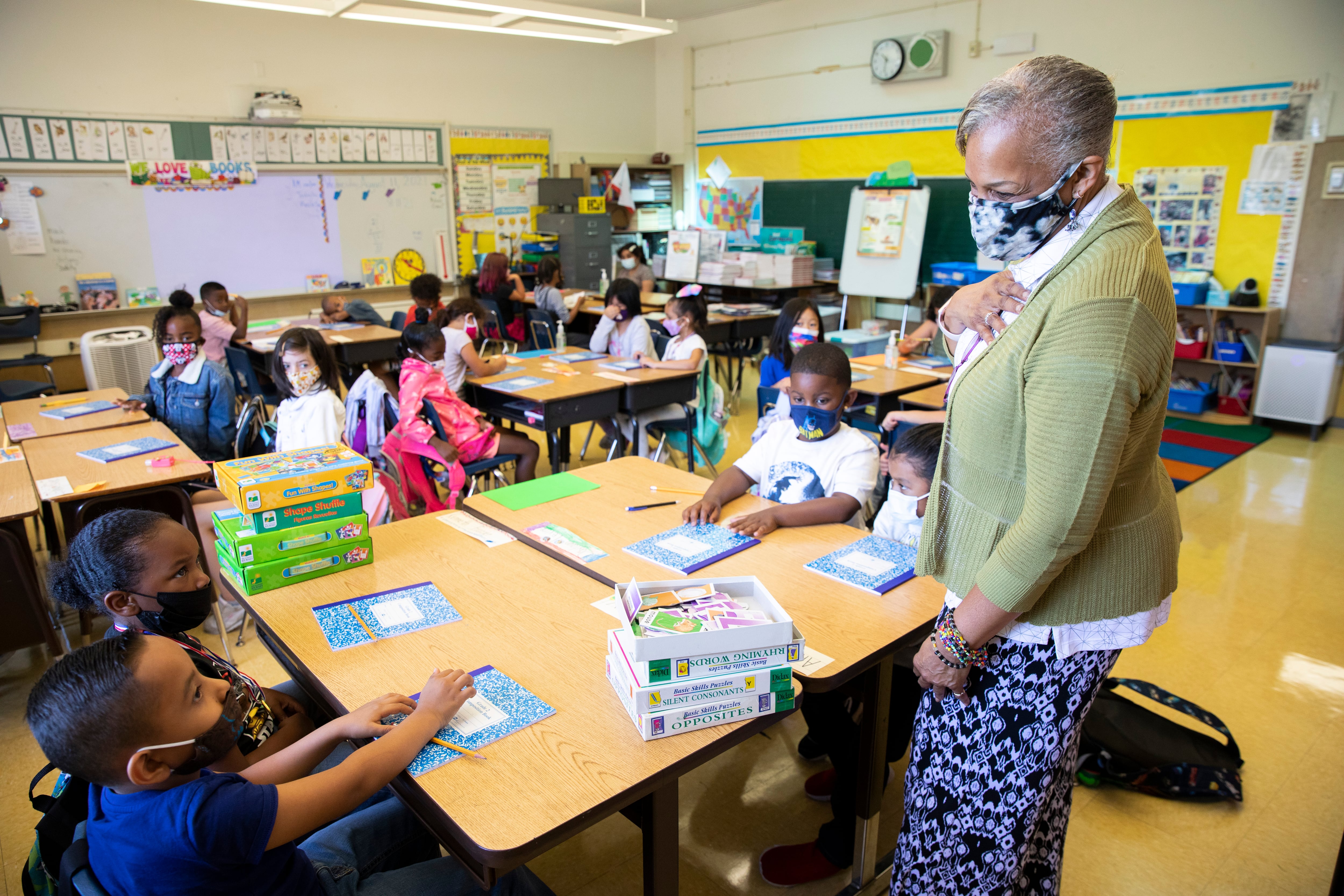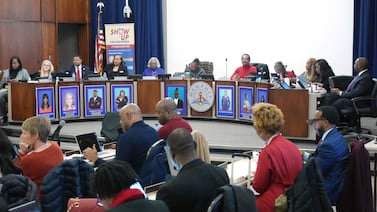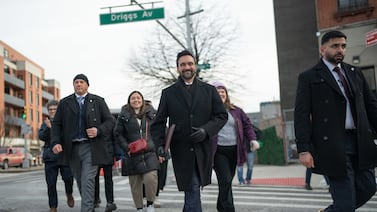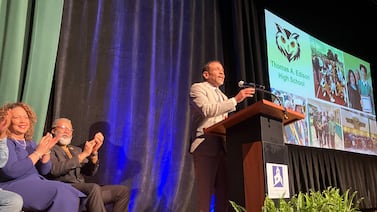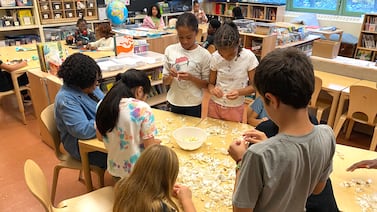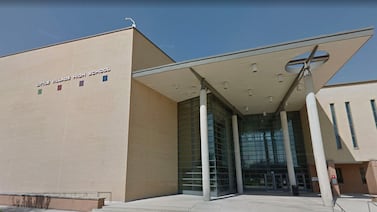This year, Konstantyn Goldin is taking a different approach to tracking student participation.
Instead of singling out students, even for doing a good job, the sixth grade science teacher in Brooklyn will keep tabs privately, so it’s more “for me and for the student,” he said. His goal is to let students show they’re engaged however they’re comfortable, even if that means a student passes him a note instead of responding aloud.
“This is the year not to call out students,” he said.
Goldin’s shifts are an effort to ease students back into school after many spent more than a year learning online. He knows the return will be joyful for some, stressful for others, with a side of typical middle school angst.
Across the country, teachers are rethinking their own back-to-school routines to account for this moment of transition. Concerns about the more contagious delta variant and no vaccine for younger children mean many students will still be wearing masks in school and sitting a few feet apart. Still, school will be closer to normal, as most teachers are at least partially vaccinated and many more students are expected to attend school in person.
“I’m hoping for less pain and struggle for my students and my colleagues,” said Christhian Saavedra, an educator and soccer coach in Rogers, Arkansas. “Man, I’m just hoping for some normalcy.”
We talked with educators from across the country about how they’re planning to keep students interested, bring fun back into the classroom, and help students process their anxiety and grief. Here’s what they told us.
Helping students out of their shells
Liz Haela works at a middle school in the Bronx, which was hit especially hard by the pandemic. Some of her students were unreachable during the school year, and she’s seen some students now struggling to socialize during New York City’s expanded summer school program.
That work has also given her a strategy she’s hoping to take with her into the next year: asking her students to swap stories.
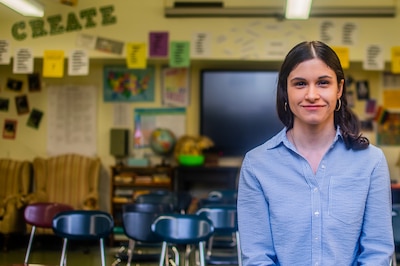
Working with the nonprofit Narrative 4, Haela’s summer school students have responded to prompts, such as: “Tell a story about a moment you were confronted by a piece of your identity.” Then students craft a story to share, with Haela offering tips on active listening, considering their partner’s perspective, and developing thoughtful questions. And she has them work together on language arts skills, too, like watching for dialogue and figurative language.
This approach has helped students open up to each other, and to her. Before piloting this program, she said, she’d never seen “students so readily come out of their shells” and “develop a comfort level with one another.”
It’s part of the reason why she thinks continuing these conversations will be crucial.
“I think that this is what schools should have been doing for a very long time,” she said. “But it was just not a priority.”
Getting students moving again — while still keeping some distance
Maude F. Graham likes to make her reading lessons feel like a game. As a teacher, she devised scavenger hunts where each stop had a reading comprehension question, and she would let students complete a challenge, like keeping a balloon in the air, after getting an answer right.
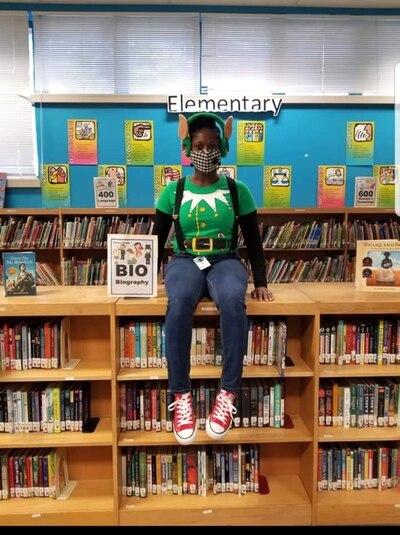
Over the last year, COVID restrictions kept her third graders mostly at their desks.
“A lot of the things had to be geared toward up-down movement,” said Graham, who tried having her students sit on top of their desks so they could move a little while still maintaining six feet of distance.
Now that those restrictions have loosened some, Graham, who is transitioning to a role as a dean of students and reading coach, is going to help other teachers find a middle ground. That could mean turning a group game into individual student activities. Her goal is to “get them up, get them moving, without touching per se.”
“It’s going to be a little more work,” she said, “but that’s why I’m there to help teachers.”
Building a community
Goldin typically starts the school year by reviewing basics, like how scientists make observations and form hypotheses, since his sixth graders didn’t always get the same amount of science instruction in elementary school.
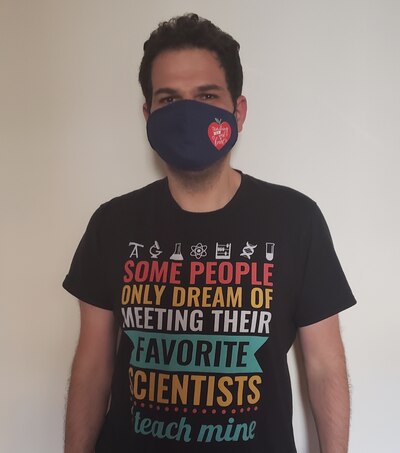
This year, there’s likely to be even more variability in what students learned during the pandemic. But the Brooklyn middle school teacher is going to find ways to get that baseline while piquing student curiosity, like by asking them to test out their data measurement skills.
He’s also planning to continue some of the creative ways he found to hold his students’ attention last school year. That includes playing socially distanced violin concerts in parks near their homes and inviting scientists to class as virtual guests. And instead of starting the year with a decorated classroom, he’s going to wait to let students hang their own artwork.
“I feel like right now,” he said, “we need more building community.”
Making space for trauma
Lately, when Megan Prince goes into a classroom to help a student struggling with their behavior, she starts off by asking the same questions: “What’s going on at home? Have they been quarantined? Is somebody sick?”
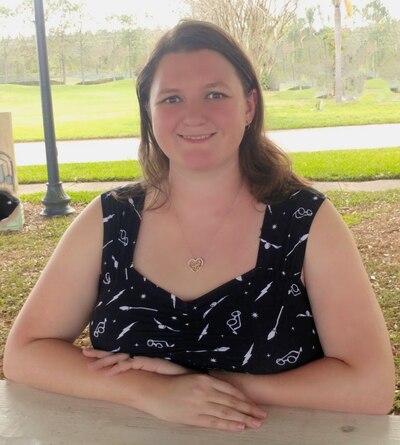
Prince is an academic and behavior support teacher in Polk County, Florida who typically works with young children with disabilities. She knows a situation like that can throw off a child’s schedule or result in a new caregiver — which can lead a child to act out.
So she’s shifted her focus to helping teachers make school as consistent as possible, a technique for managing trauma that’s especially important for students with disabilities who benefit from routine. This year she’ll be helping teachers come up with more explicit schedules and verbal cues so students know when activities are winding down.
She also expects she’ll be working with teachers to help young students practice social skills they missed out on.
“For the last year and a half, we’ve been telling you that it’s forbidden for you to share crayons, and you’re not allowed to touch each other,” she said. “We’re all going to have to be really understanding of that.”
Asking students what they need
Last year, Winnie Williams-Hall was sometimes “at a loss” for how to help her students. The Chicago teacher works with eighth graders with disabilities who need extra help in math and reading. Her students often kept their cameras off, so she couldn’t see their faces when they were struggling. And because her district skipped some assessments it would typically give, she didn’t have as much academic data to guide her.
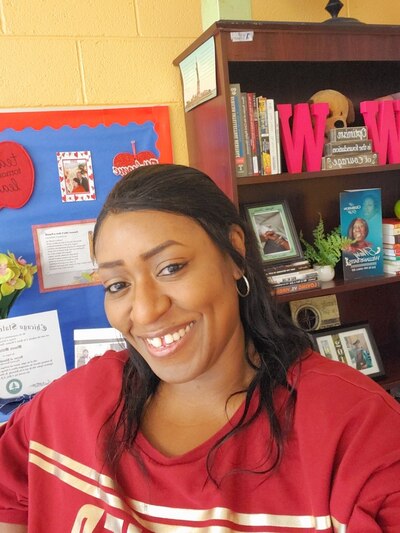
“I have no idea where you are, as far as your instructional level, or where you left off, or how big the learning gap was,” she said of her students. “We want to make sure that our students are not falling so far behind that we can’t help them come up academically.”
That’s why she’s particularly happy that her district is transitioning to a new set of assessments this year. She hopes they will help her better track how her students are doing in math and reading, and key in on what support they need.
Williams-Hall also plans to ask her students to weigh in on questions like: “How do you want to approach this year?” and “What do you think you need support in?”
“They can feel more open to say: ‘Hey, well, I didn’t get this when I was out, but I did learn this,’” she said. “And we can share, and share ideas.”

